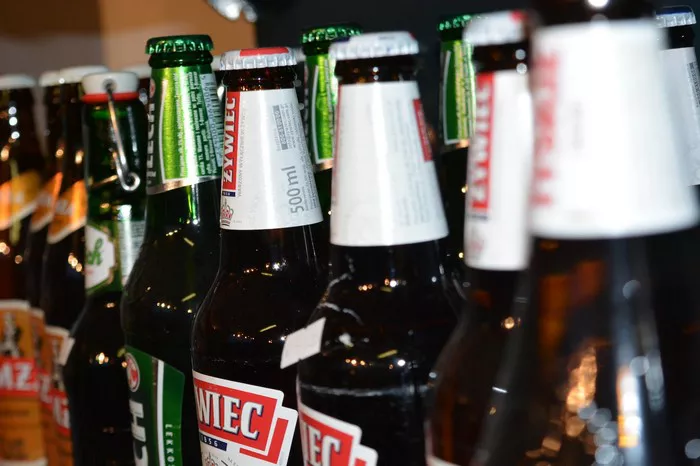Nitrogenated beer, often referred to as nitro beer, is a distinct and captivating category within the world of craft brewing. Known for its smooth and creamy texture, as well as its mesmerizing cascading effect when poured, nitrogenated beer has gained immense popularity among beer enthusiasts. This professional article delves deep into the world of nitrogenated beer, exploring its origins, unique characteristics, brewing techniques, iconic styles, and the cultural significance of this beloved and innovative beer category. Whether you’re an experienced beer aficionado or just curious about the world of nitrogenated brews, this guide will provide you with a comprehensive understanding of what makes nitro beer so special.
The Origins of Nitrogenated Beer
The story of nitrogenated beer traces back to Ireland and the United Kingdom, where it emerged as a response to the demand for a smoother, creamier, and less carbonated beer. The iconic and often imitated Guinness Draught, which was introduced in 1959, played a pivotal role in popularizing nitrogenated beer.
The primary innovation behind nitrogenated beer was the use of nitrogen gas (N2) instead of carbon dioxide (CO2) for carbonation. Nitrogen gas, when infused into beer, creates smaller bubbles compared to CO2, resulting in a creamier and smoother mouthfeel. This departure from the traditional, highly carbonated beers of the time marked a significant shift in the beer landscape.
The nitrogenation process involves the use of a mixture of 75% nitrogen and 25% carbon dioxide, known as “beer gas,” which is a blend of N2 and CO2. This mixture is used to carbonate and dispense nitrogenated beer, typically through a specific type of tap system known as a “nitro faucet.”
The Unique Characteristics of Nitrogenated Beer
Nitrogenated beer is distinct in several ways, and its unique characteristics are key to its popularity:
Creamy Mouthfeel: The nitrogen infusion creates a silky and creamy texture in the beer, resulting in a smoother and more luscious mouthfeel compared to traditional carbonated beers.
Dense and Persistent Head: Nitrogenated beers are known for their dense and stable foam head. This head, often referred to as “nitro head,” is velvety and long-lasting, adding to the beer’s visual and textural appeal.
Cascading Effect: When poured from a nitro tap, nitrogenated beer exhibits a mesmerizing cascading effect. As the beer is poured, the tiny nitrogen bubbles rise to the top, creating a visually captivating display that ends with a beautiful creamy head.
Subdued Carbonation: Unlike carbonated beers that can be effervescent and lively, nitrogenated beer has a milder level of carbonation. This allows the flavors and aromas of the beer to shine through without the distraction of excessive bubbles.
Temperature Sensitivity: Nitrogenated beer is best enjoyed slightly warmer than extremely cold temperatures. A slightly higher serving temperature enhances the beer’s creaminess and allows its flavors to fully develop.
Enhanced Aromatics: The creamy texture of nitrogenated beer can enhance the perception of aromas, making it ideal for styles with complex fragrance profiles.
A Variety of Styles: Nitrogenation is not limited to a specific beer style. While stouts, especially dry stouts like Guinness, are the most famous nitrogenated beer style, brewers have experimented with nitrogenating various beer styles, including porters, ales, and even IPAs.
Brewing Techniques for Nitrogenated Beer
Brewing nitrogenated beer requires specific techniques to achieve the desired mouthfeel, appearance, and flavor. Some key aspects of brewing nitrogenated beer include:
Ingredient Selection: Careful selection of ingredients is crucial. High-quality malt and hops are used to create a flavorful base beer. The choice of yeast and grains can significantly impact the final product.
Nitrogenation: The infusion of nitrogen gas into the beer is a critical step. Brewers use beer gas, a blend of nitrogen and carbon dioxide, to carbonate the beer. This mixture creates a smooth and creamy texture.
Widget Technology: Many nitrogenated beers, especially those sold in cans, utilize widget technology. A widget is a small plastic or metal device placed inside the can. When the can is opened, the widget releases a burst of nitrogen gas into the beer, recreating the cascading effect and creamy head.
Draught System: Nitrogenated beer is typically served using a specialized draught system featuring nitro faucets. These faucets use small holes to break the nitrogen gas into minuscule bubbles as the beer is poured, creating the creamy head and enhancing the mouthfeel.
Iconic Nitrogenated Beer Styles
While nitrogenated beer can be applied to various beer styles, certain styles have become iconic representations of the category. Here are some of the most well-known nitrogenated beer styles:
Nitro Stout: Dry stouts, such as Guinness Draught, are perhaps the most famous nitrogenated beer style. Known for their roasted malt character, coffee notes, and a creamy mouthfeel, these beers are celebrated for their rich and smooth taste.
Nitro Porter: Porters, particularly robust porters, are also commonly nitrogenated. They often feature flavors of chocolate, caramel, and dark fruits, complemented by a creamy texture.
Nitro Cream Ale: Cream ales, as the name suggests, are naturally suited to nitrogenation due to their smooth and gentle characteristics. These beers are easy-drinking and known for their mild flavors.
Nitro IPA: Some brewers have ventured into nitrogenating India Pale Ales (IPAs). Nitrogenated IPAs offer a unique twist by combining the hoppy flavors of an IPA with the creamy mouthfeel of nitrogenation.
Nitro Coffee Stout: A fusion of two beloved beverages, nitro coffee stouts combine the rich flavors of roasted malt with the smoothness of cold-brew coffee. The result is a delightful and flavorful brew.
In Conclusion
Nitrogenated beer, with its origins in Ireland and the UK, has become a beloved category in the world of craft brewing. Known for its creamy mouthfeel, iconic cascading effect, and unique styles, nitrogenated beer offers a distinctive and immersive experience for beer enthusiasts.


